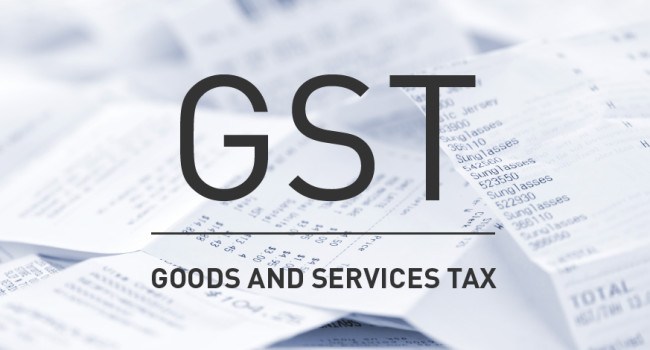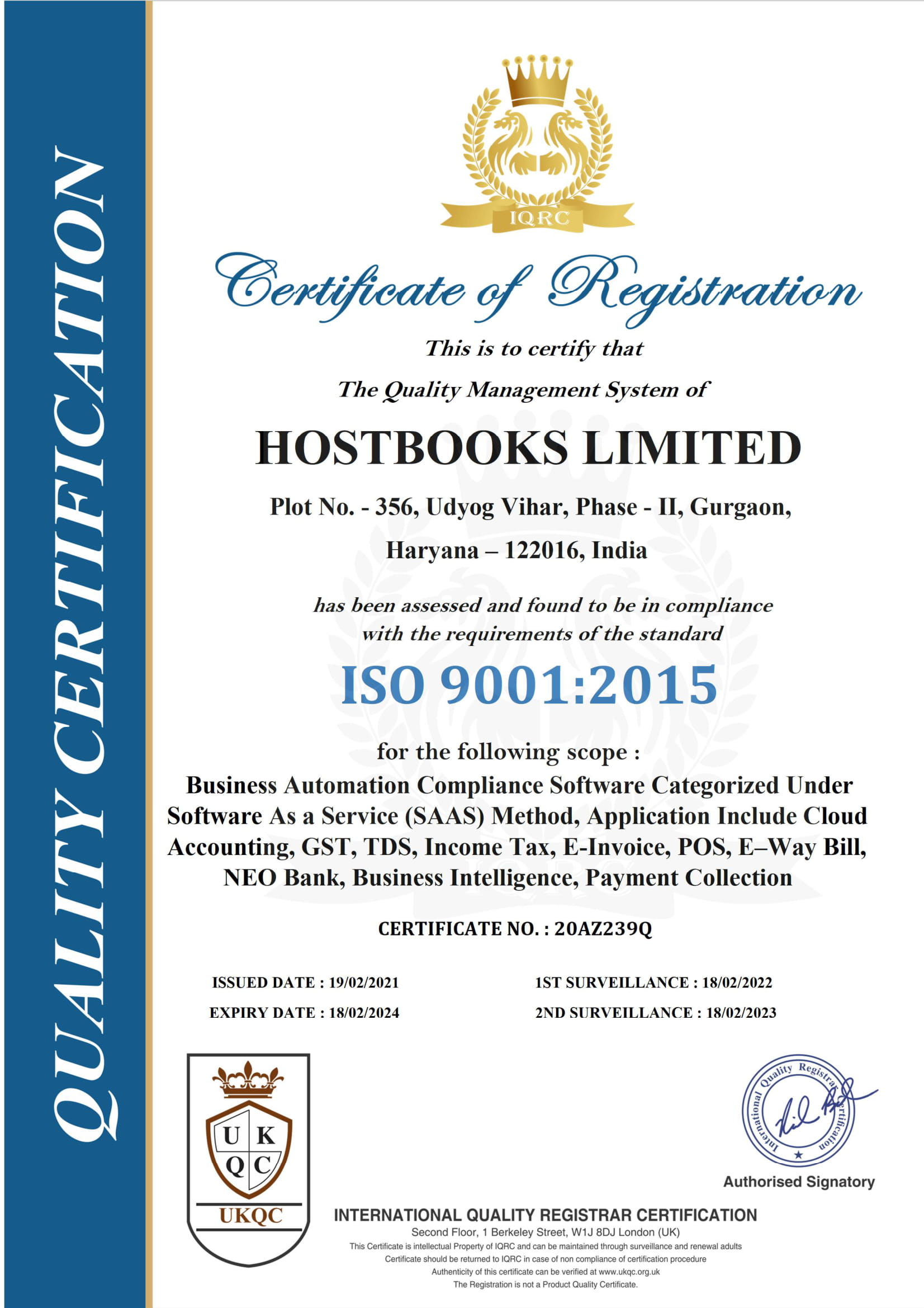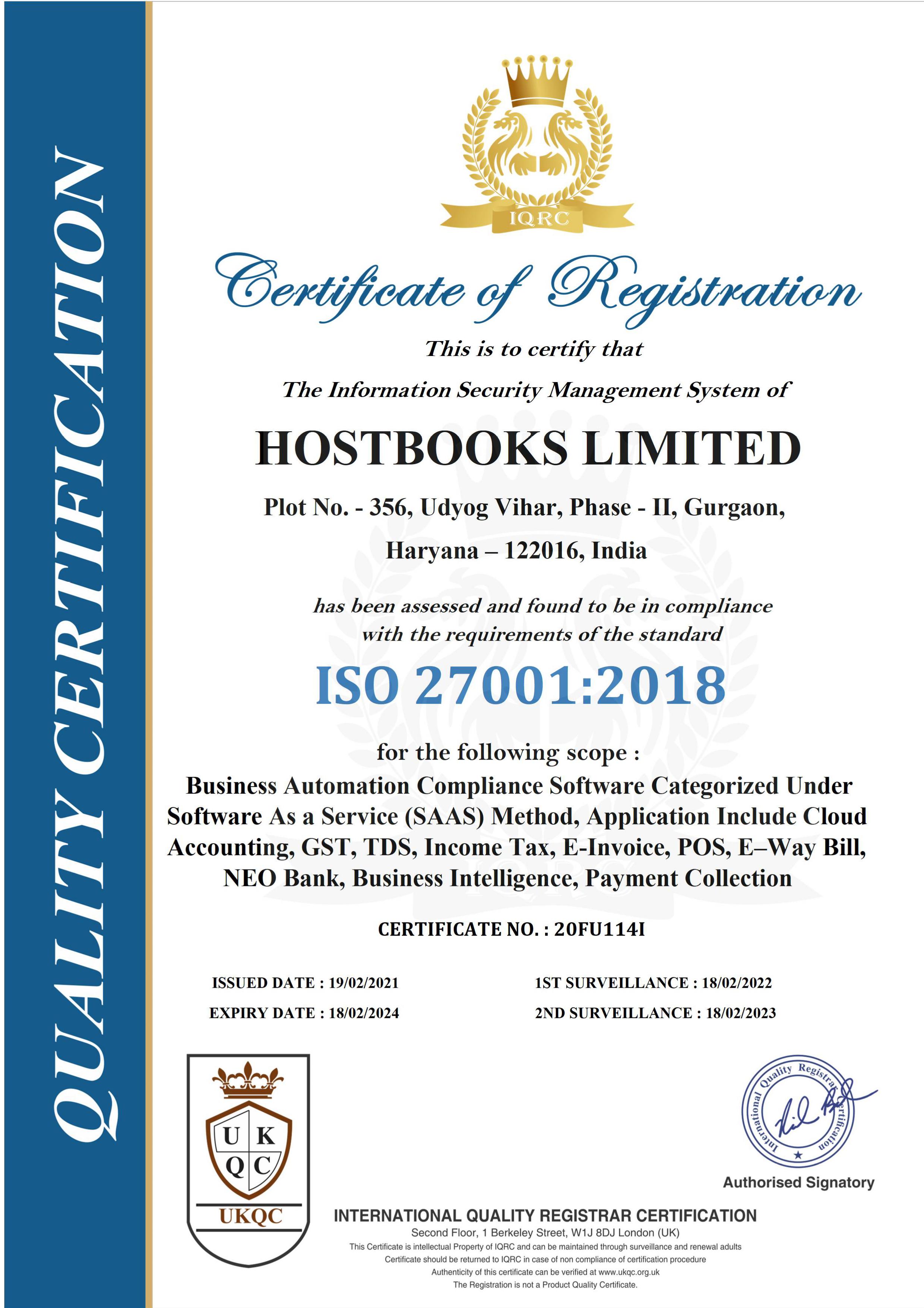
JARGONS FOR GST
December 23, 2017
A Complete Guide to GST Registration Online – Eligibility, Process, and Fees
February 27, 20181. The various types of Returns under Goods and Services Tax
GSTR-1
GSTR-1 is a monthly return of sales or outward supplies.
Who is supposed to file GSTR-1?
Every business that is registered under Goods and Services Tax must file GSTR-1. By filing this return, every tax payer makes a declaration of all the sales transactions made by him in the given period.
The businesses having an aggregate turnover less than 1.5 crore INR need to file a quarterly return and those having an aggregate turnover more than 1.5 crore INR need to file a monthly return.
GSTR-1A
It is an amendment form used to correct the GSTR-1 for any mismatches between the GSTR-1 of a taxpayer and the GSTR-2 of his customers. This can be filed between 15th and 17th of the following month.
GSTR-2
GSTR-2 is a monthly return of purchases or inward supplies.
Who is supposed to file GSTR-2?
Every registered person must file GSTR-2 except for the following:
- Input Service Distributor
- Non-residential taxable person
- A person required to deduct the TDS or e-commerce operator system
GSTR-2A
GSTR-2A includes mismatches in GSTR-1 and GSTR-2. It is not used for filing purpose as it involves reconciliation of mismatches.
The reasons for a mismatch can be:
- Wrong GSTIN of the user or the counter-party
- Wrong invoice date or invoice no.
- Wrong tax value
GSTR-3
GSTR-3 is a monthly GST return that is divided into the following parts:
- Part-A
It contains the information that is furnished through returns in forms GSTR-1 and GSTR-2, based on other liabilities of previous tax periods. Part-A is generated electronically.
- Part-B
It contains the tax liability, interest, penalty, and refund claimed from cash ledger. Also, it is auto-populated. The tax liability is calculated based on GSTR-1 and after making adjustments for Input Tax Credit claimed in GSTR-2.
Who is supposed to file GSTR-3?
Every registered person must file GSTR-2 except for the following:
- Input Service Distributor (ISD)
- Non-residential taxable person
- A person required to deduct the TDS or e-commerce operator system
GSTR-3A
This is the tax notice issued by the tax authority to a defaulter who fails to file monthly GST returns on time.
GSTR-4
It is a quarterly return for those who have registered themselves under the GST Composition Scheme. The entities which have a turnover up to 1.5 crore INR and 75 lakhs INR for the North-Eastern States & Himachal Pradesh are eligible for this scheme. Under the composition scheme, the taxpayer is required to file one return every quarter instead of three returns every month.
GSTR-4A
Quarterly purchase-related tax return for composition dealers. It’s automatically generated by the GSTN portal based on the information furnished in the GSTR-1, GSTR-5, and GSTR-7 of your suppliers.
GSTR-5
A variable return for Non-Resident foreign taxpayers. It contains the details of the taxpayer, period of return and invoice details of all goods and services sold and purchased by the taxpayer in India for the registered period.
GSTR-6
It is a monthly return for Input Service Distributors (ISD). This return contains the details of the taxpayer, period of the return, supply details from the GSTR-1 of counter-parties, invoice details, separate ISD ledger containing the opening ITC balance for the period, credit for ITC services received, debit for ITC reversed or distributed, and closing balance.
GSTR-7
GSTR-7 is a monthly return for TDS transactions. It contains the basic information of the taxpayer, period of the return, supplier’s GSTIN, invoices against which the tax has been deducted (SGST, CGST, and IGST), and details of any other payment such as interests and penalties.
GSTR-8
A monthly return for e-commerce operators. It contains the basic information of the taxpayer, the period of the return, details of supplies made to customers through the e-commerce portal by both registered taxable persons and unregistered persons, customers’ basic information, the amount of TCS, tax payable, and tax paid.
GSTR-9
An annual consolidated tax return that includes a summary of taxpayer’s income & expenditure in detail.
GSTR-9A
GSTR-9A is a consolidated annual return for compounding business entities with a turnover up to 1.5 crores INR. It includes all the quarterly returns filed in that financial year.
GSTR-10
The final GST return for the cancellation of GST registration. This return is to be filed in case of termination of business activities permanently/cancellation of GST registration. It contains the details of all supplies, liabilities, tax collected, tax payable, etc.
GSTR-11
Variable tax return for taxpayers with UIN. GSTR-11 contains the details of purchases made by foreign embassies and diplomatic missions for self-consumption during a particular month.
2. Due Dates for filing GST Returns
| Type of Return | Due Date | Frequency | Who needs to file it? |
| GSTR-1 | 10th of every month | Quarterly for aggregate turnover less than 1.5 crore INR. Monthly for aggregate turnover more than 1.5 crore INR. | Every registered person |
| GSTR-2 | 15th of every month | Monthly | Every registered person |
| GSTR-3B | 20th of every month | Monthly | Every registered person |
| GSTR-4 | 10th of April, July October, and January | Quarterly | Persons registered under composition scheme |
| GSTR-5 | 20th of every month & within 7 days after the expiry of registration | Monthly | Non-Resident taxable person |
| GSTR-6 | 13th of every month | Monthly | Input Service Distributors |
| GSTR-7 | 10th of every month | Monthly | Authorities deducting TDS |
| GSTR-8 | 10th of every month | Monthly | E-commerce operators |
| GSTR-9 | 31st December of next financial year | Annually | Registered Persons |
| GSTR-9A | 31st December of next financial year | Monthly | Compounding Business Entities |
| GSTR-10 | Within 3 months of cancellation of GST registration | When the registration is cancelled or surrendered | Registered persons with cancelled GST registration |
| GSTR-11 | 28th of the month following the month for which the statement is filed | Monthly | All those who are holding a Unique Identity Number (UIN) |
3. Penalty for non-filing or late filing of GST Returns
- A penalty of Rs. 100 per day is applicable for late-filing of GST return. The penalty would be payable for the period in which the taxpayer failed to furnish the return. The maximum penalty is Rs. 5000.
- In case, a taxpayer fails to file GST return for any month, then the GST return for the next month cannot be filed by him.
- Further, if a taxpayer fails to file GSTR-2 return on the 15th, then the taxpayer would not be able to file GSTR-3 return on the 20th.
- The late-filing of GST return results in a cascading effect that leads to heavy fines and penalty.
4. What is Composition Scheme?
The GST Composition scheme is an easy and convenient tax scheme for small and medium enterprises. Under this scheme, firms can pay a fixed percentage of their turnover as tax. They need to fill only reduced number of returns compared to normal taxpayers under GST. The floor rate of tax for CGST and SGST shall not be less than 1%. The turnover of an enterprise should be up to 1.5 crores INR and 75 lakhs INR in case of north-eastern states.
Who can avail composition scheme?
A dealer who:
- Deals only in the intra-state supply of goods or service of only restaurant sector.
- Does not supply non-taxable goods.
- Pays tax at normal rates in case he is liable under reverse charge
- Is not an e-commerce operator.
- Is not a manufacturer of ice cream, pan masala or tobacco (and its substitutes).
5. What are SAC and HSN Codes?
These codes are allotted to all the goods or services in supply. HSN means “Harmonized System of Nomenclature”, a universally accepted 6-digit uniform code for goods and has been developed by World Customs Organization (WCO).
Service Accounting Code (SAC) is meant for services. In India, we use 8-digit HSN and SAC codes, where the first 2 digits of the code stand for the chapter where the good or service is listed in the Code List. Next 2 digits are the Chapter, followed by 2 digits for the product. Last 2 digits are a classification of the product. HB-GST has inbuilt HSN and SAC codes.
6. Offline Utility
The offline utility of HB-GST helps you create your invoices in the offline mode as per your convenience. In case the user is facing certain internet connectivity issues, then he may switch over to the offline mode.
7. How to file GST-1, 2 and 3?
https://www.gst.gov.in/help/returns
8. How to install emSigner?
https://tutorial.gst.gov.in/userguide/loginanddsc/#t=Install_emSigner_manual.htm
9. How to register DSC with GST portal?
https://tutorial.gst.gov.in/userguide/loginanddsc/#t=Register___Update_DSC.htm

Try HostBooks
SuperApp Today
Create a free account to get access and start
creating something amazing right now!















